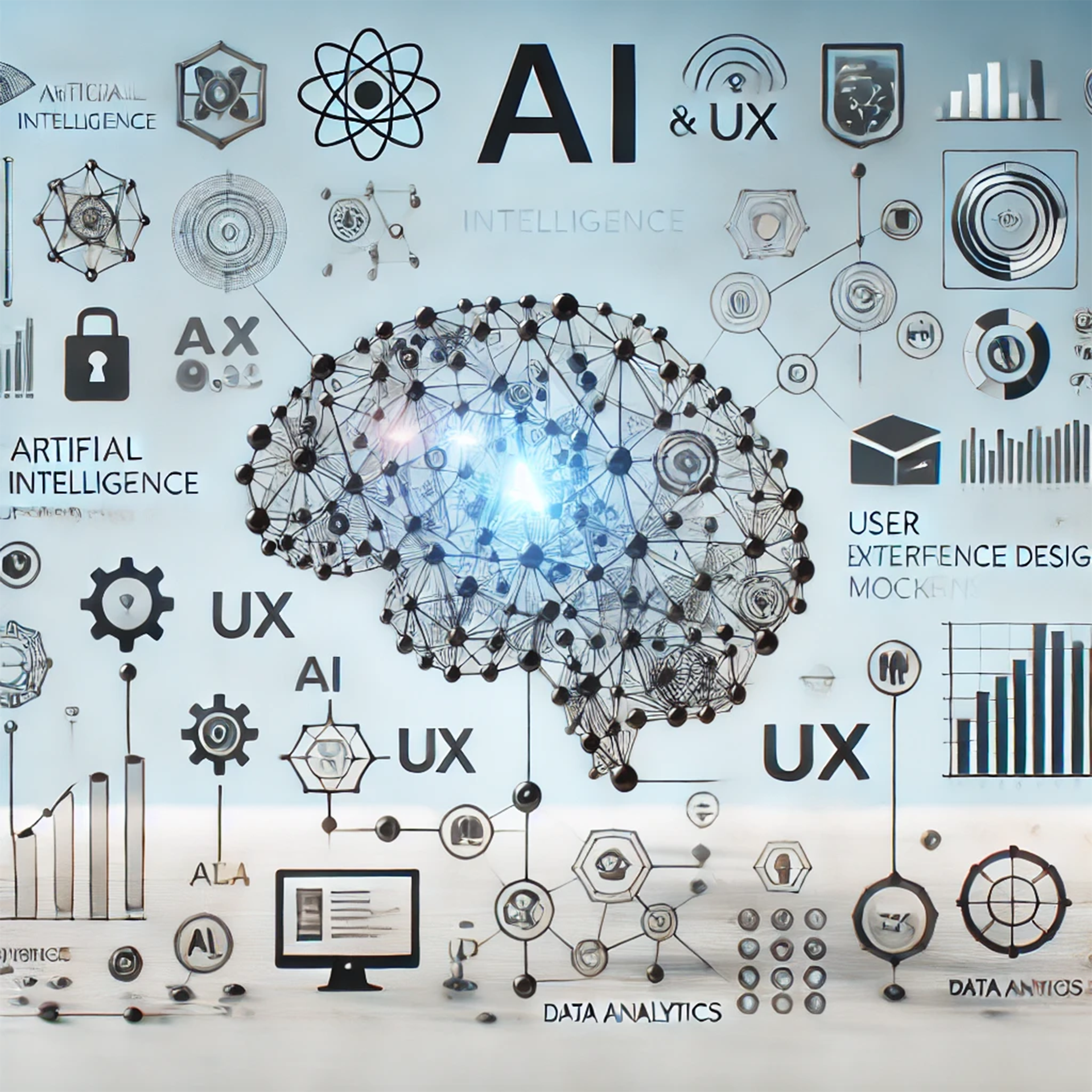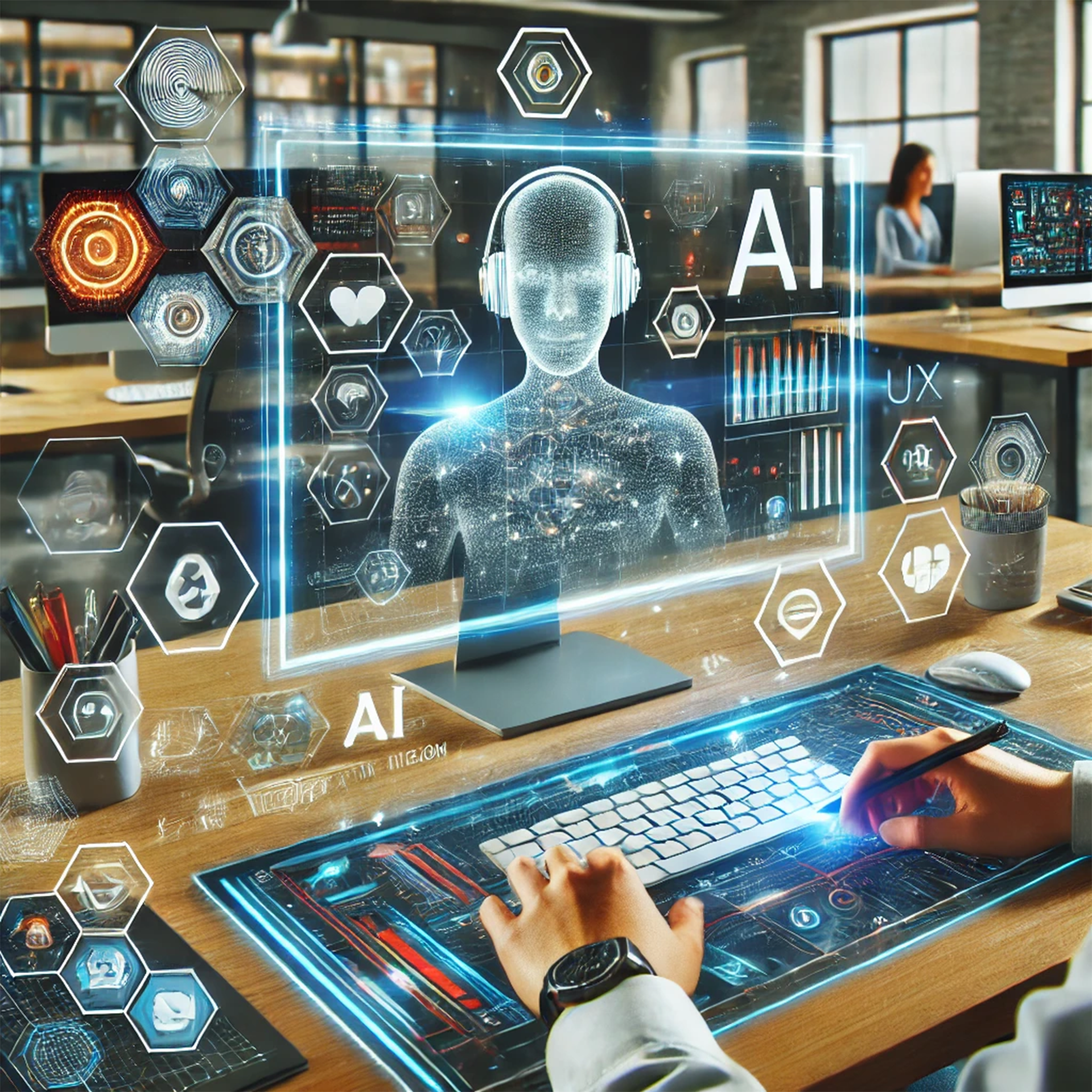How AI and UX Design Tools Can Play Nice Together Now and in the Future
In the world of UX design, the tools we use shape the way we create, collaborate, and innovate. With the rapid advancements in artificial intelligence (AI), UX designers now have the opportunity to leverage AI-driven tools alongside traditional design and prototyping software to enhance their workflows and bring even more value to their users. The question is: how do AI and current UX tools work together to create more seamless, user-centered designs, and how can we expect this collaboration to evolve in the future?
Let’s explore how these two forces—AI and UX design tools—can work hand in hand now and how we can expect this relationship to evolve.
The Current Collaboration: AI Meets UX Tools
In today's design landscape, many leading UX tools are beginning to incorporate AI features that automate or assist in tasks that were once time-consuming or repetitive. These tools help designers focus on what matters most: creating meaningful experiences for users. Here are a few examples of how AI and UX design tools are currently working together:
1. Automated User Research & Insights
Traditionally, user research involves surveys, interviews, and usability testing. AI-powered analytics tools can now streamline this process, helping designers gather valuable insights about user behavior in real-time. For instance, AI algorithms can analyze user interactions with a prototype or live product, identifying patterns or bottlenecks in user flows that designers might otherwise miss.
Tools like Hotjar and Crazy Egg offer heatmaps and session recordings powered by AI, giving UX designers an intelligent way to assess user engagement. By automating the process of collecting insights, AI frees designers from manual data analysis, allowing them to focus on iterating designs that best serve the user.
2. Personalization and Predictive Design
AI’s ability to process vast amounts of data allows for better user personalization. As UX tools evolve, they are becoming smarter at predicting user preferences and behaviors. Using machine learning, design platforms like Figma and Adobe XD now integrate features that adjust UI elements based on real-time data. This creates more dynamic, adaptive designs, ensuring that users are always presented with a relevant experience.
Designers can now test multiple design variations using AI-driven A/B testing tools, which automatically analyze which design elements drive the most engagement. This helps accelerate the design process and improves decision-making.
3. Automating Repetitive Design Tasks
AI is also adept at eliminating repetitive, mundane tasks in the design process. For instance, design systems such as Sketch and Figma are incorporating AI to automatically generate layouts, components, and even suggest design improvements based on user behavior.
AI tools can now auto-generate variations of UI elements, optimize color schemes, and even suggest typography changes that align with user preferences or accessibility standards. This not only saves designers time but also ensures that designs are both efficient and consistent.
The Future of AI and UX Design Tools: What’s Next?
As AI continues to advance, its role in UX design will become even more integrated and indispensable. Here are a few trends and possibilities we can look forward to:
1. Intelligent Prototyping
Imagine a future where AI assists in the prototyping phase of design, not just by automating tasks but by generating entire prototypes based on initial inputs. AI could analyze design trends, user preferences, and even competitor data to suggest prototype elements that are most likely to resonate with the target audience.
For example, a designer could input a few details about the product, and AI could generate a fully interactive prototype, making suggestions for the most effective user flow and layout based on millions of data points.
2. AI-Assisted Collaboration
In the future, AI will enable better collaboration between designers, developers, and stakeholders. AI can act as an intermediary, suggesting adjustments based on different user needs and team feedback. Imagine a smart assistant within design tools that ensures all team members are aligned on the project’s goals, guiding everyone toward the most user-friendly solutions.
For remote teams, AI could also translate design feedback into multiple languages or even tailor it to different cultural contexts, improving collaboration across global teams.
3. Smarter Design Tools with Natural Language Processing
AI tools are increasingly incorporating natural language processing (NLP), which allows designers to describe their design ideas in plain language and have the AI automatically convert these descriptions into design elements. For instance, you could simply say, “Create a button with a gradient background,” and the AI tool would generate it for you.
In the future, this capability could extend to entire design systems. Imagine telling your design tool, “Build a product page for an e-commerce site with a focus on easy checkout,” and the AI would create a full-fledged design based on best practices, user data, and trends.
4. AI-Driven Accessibility Features
Accessibility is an ongoing concern in UX design, and AI can play a critical role in ensuring that designs are inclusive. Future AI tools could automatically check prototypes for accessibility issues, such as color contrast, font readability, and compliance with WCAG (Web Content Accessibility Guidelines).
AI could even help designers test prototypes with diverse user groups by simulating various disabilities (e.g., visual impairments, hearing loss) and providing recommendations on how to adjust the design for better inclusivity.
Conclusion
AI and UX design tools are already collaborating in powerful ways, helping designers work smarter, faster, and more effectively. From streamlining user research to automating repetitive tasks, AI is enabling UX professionals to focus on what they do best—creating meaningful and engaging user experiences.
As we look to the future, the possibilities are even more exciting. We can expect even more intelligent, adaptive, and collaborative design tools that leverage AI’s power to drive innovation and efficiency. By embracing these technologies, UX designers will be better equipped to create intuitive, user-centered designs that not only meet but exceed the needs and expectations of tomorrow's digital users.
AI and UX design tools aren’t just playing nice together—they’re helping shape the future of design. And the best part? We’re just getting started!



* * * <a href="https://uddip.org/index.php?kr7jm3">Get Free Bitcoin Now</a> * * * hs=75bcf0b68994910
July 2, 2025 9:16 AM